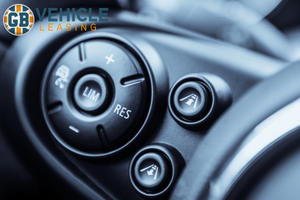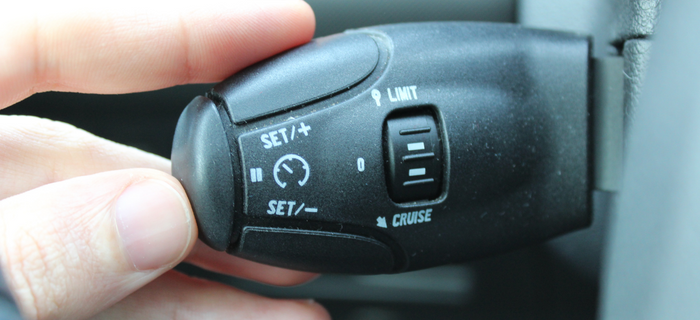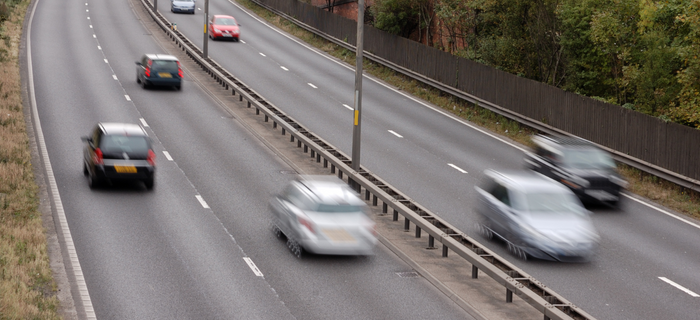
What is cruise control in cars?
Driving for long distances on motorways and roads can be both tedious, as it requires the driver to sustain a constant speed while keeping a safe distance from other vehicles on the road. This is where cruise control can prove to be a valuable feature that is present in many modern cars. But what is cruise control?
Cruise control is an automated system that enables motorists to maintain a constant speed without having to manually control the accelerator pedal. Typically, pressing a button on the steering wheel or dashboard activates the cruise control system. This not only offers a more comfortable drive but also reduces the chances of fatigue-related accidents and speeding.
Here, we will delve deeper into how cruise control works and the different kinds of cruise control systems available in many cars these days. Additionally, we will discuss the advantages and limitations of this feature and provide some useful tips on how to use it safely.
How does cruise control work?
Cruise control systems in cars work by automatically controlling the throttle of the car to maintain a constant speed. Here's how it works:
Set Speed: The driver sets the desired speed by pressing a button on the steering wheel or dashboard. Once the cruise control is activated, the driver can take their foot off the accelerator pedal.
Speed Sensor: The cruise control system uses a speed sensor to monitor the speed of the vehicle.
Throttle Control: Once the desired speed is set, the cruise control system takes over the control of the throttle and adjusts it as needed to maintain the set speed. The system does this by sending signals to the car's electronic control unit (ECU) which controls the throttle.
Monitoring Systems: Modern cruise control systems may have additional monitoring systems that can adjust the speed of the car based on traffic conditions. These systems may use radar or cameras to detect the distance between the car and other vehicles on the road and adjust the speed accordingly.
Deactivation: The driver can deactivate the cruise control system by either pressing the brake pedal or the cancel button on the steering wheel.

Advantages of cruise control
There are several advantages to using cruise control while driving, including:
Reduced Fatigue: Cruise control allows the driver to relax their leg muscles and reduces the physical fatigue associated with long-distance driving.
Consistent Speed: Cruise control helps to maintain a constant speed, which can help reduce the risk of speeding and the likelihood of receiving a speeding ticket.
Better Fuel Efficiency: By maintaining a consistent speed, cruise control can help improve fuel efficiency and reduce the amount of fuel consumption during long drives.
Improved Safety: Cruise control can improve safety by reducing driver distractions and allowing the driver to focus on the road ahead, especially on long, straight motorways.
More Comfortable Driving Experience: With cruise control, drivers can maintain a comfortable speed without having to constantly adjust the accelerator pedal. This can help reduce stress and make the driving experience more enjoyable.
Limitations of cruise control
While cruise control can be a helpful feature for drivers, there are some limitations to its use. These include:
Not Suitable for All Driving Conditions: Cruise control is best used on long, straight motorways or roads. It may not be suitable for driving in urban or mountainous areas with frequent stops or curves in the road.
Limited Control: Traditional cruise control provides limited control as it only manages the speed of the car and does not consider other important factors such as traffic flow, weather conditions, or road conditions. Therefore, the driver still needs to pay attention and make necessary adjustments.
Reduced Driver Alertness: The use of cruise control may result in a reduced level of driver alertness, as the driver may become more passive and less aware of their surroundings. This can be dangerous in situations where the driver needs to react quickly to unexpected events.
Limited Braking Ability: Traditional cruise control does not have the ability to apply the brakes in emergency situations, which means the driver must manually brake the car if needed.
Maintenance and Repair Costs: Cruise control systems can be expensive to maintain and repair, especially if they malfunction or fail.
Overall, while cruise control can provide benefits to drivers, it's important to remember that it is not a substitute for attentive driving, and drivers should always be ready to take control of the car if necessary.

At what speed does cruise control start working?
The speed at which cruise control begins to work varies depending on the specific make and model of the car. However, in general, most cars with cruise control systems can be set to a minimum speed of around 25-30 mph before the system can be activated.
Some newer cars with advanced cruise control systems, such as adaptive cruise control, may have a lower minimum speed requirement, as these systems can also slow the car down to a complete stop and resume the set speed automatically. However, it's important to consult the car's owner's manual to determine the specific minimum speed requirements for your car's cruise control system.
What is the maximum speed for cruise control?
The maximum speed for cruise control varies depending on the car make and model, but in general, cruise control is designed to work up to 90 mph. Some cars may have a lower or higher maximum speed for cruise control, so again, it's important to refer to the owner's manual for specific information about your car.
Does cruise control use more fuel?
In general, using cruise control can help improve fuel efficiency and save on fuel. This is because the system helps maintain a consistent speed, which can reduce unnecessary acceleration and deceleration, and thus, save fuel.
However, there are some situations where using cruise control might actually lead to higher fuel consumption. For example, when driving uphill, the engine has to work harder to maintain a constant speed, which can lead to increased fuel consumption, even with cruise control engaged. Alternatively, when driving in areas with changing terrain, such as hills, the cruise control system might not be able to maintain a constant speed, leading to increased fuel consumption.
Can you brake on cruise control?
Yes, on traditional cruise control systems, a driver can apply the brakes while cruise control is engaged. When the driver applies the brakes, the cruise control system will automatically disengage, and the car will slow down. Once the brakes are released, the driver can resume the set speed and re-engage the cruise control system.
With advanced cruise control systems such as adaptive cruise control, the system will automatically apply the brakes if it detects an obstacle in front of the car, and then resume the set speed once the obstacle is cleared. However, it's important to note that drivers should not rely solely on cruise control when driving and should always remain alert and ready to take control of the car if necessary.
Do electric cars have cruise control?
Yes, many electric cars do have cruise control, just like conventional petrol or diesel cars. In fact, many modern electric cars come equipped with advanced cruise control systems, such as adaptive cruise control. However, this does depend on the make/model/trim level you choose. It's advisable to consult the car's manual to determine whether or not it has cruise control and how it works.
What is adaptive cruise control?
Adaptive cruise control (ACC) is an enhanced version of the conventional cruise control system that can be found in modern cars. Unlike traditional cruise control, which maintains a constant speed, ACC incorporates sensors and radar to automatically modify the car's speed according to the proximity of other vehicles on the road.
By analysing the distance between vehicles, the adaptive cruise control system can regulate the speed of the car by applying brakes or accelerating automatically. ACC is designed to maintain a secure distance from other vehicles, and if the car in front decelerates, the system adjusts the car's speed to preserve a safe following distance.
Furthermore, some advanced ACC systems are capable of bringing the car to a complete stop if the traffic ahead halts. Once the traffic starts moving again, the adaptive cruise control system will resume the speed previously set by the driver.
What is cruise control with traffic jam assist?
Cruise control with traffic jam assist is an advanced driver assistance system that integrates conventional cruise control with adaptive cruise control and lane-keeping technology. Its primary function is to aid drivers in navigating congested traffic conditions by automatically keeping the car central in its lane and maintaining a safe distance from the vehicle ahead to prevent accidental lane departures.
Cruise control with traffic jam assist is widely acknowledged as a crucial breakthrough in driving safety and convenience. By reducing the need for frequent acceleration and deceleration during stop-and-go traffic situations, it can help reduce stress and fatigue. Moreover, it can enhance fuel efficiency by minimising unnecessary speed fluctuations.
Cruise control safety tips
While cruise control can be a helpful feature for drivers, it's important to use it safely and responsibly. Here are some safety tips to keep in mind when using cruise control:
Use Cruise Control Only on Appropriate Roads: Cruise control works best on long, straight motorways or roads. It is not recommended to use it in urban areas with frequent stops and curvy roads.
Stay Alert: Drivers need to stay attentive and alert at all times. Keep your hands on the steering wheel and your eyes on the road, ready to take control of the car if necessary.
Adjust the Speed Appropriately: Ensure the cruise control is set to an appropriate speed for the road and traffic conditions. Avoid using cruise control during bad weather conditions such as rain, snow, or ice.
Avoid Distractions: Avoid distractions while driving, such as using your phone, eating or adjusting the radio. These distractions can cause you to lose focus and reduce your reaction time if you need to take control of the car suddenly.
Maintain Your Car Properly: Make sure that your car is in good working condition, with properly inflated tires and well-functioning brakes. Car maintenance is important for safe driving, including when using cruise control.
Know How to Use the System: Understand how to use the cruise control system in your car, such as how to activate and deactivate it, alter the speed etc.
By following these safety tips, drivers can use cruise control more safely and responsibly, making their driving experience more comfortable and enjoyable.
Overall, cruise control can provide a range of benefits that make long-distance driving more comfortable, safer, and more fuel-efficient. However, it's important to remember that cruise control is not a replacement for attentive driving, and drivers should remain alert and ready to take control of the car at any time.
If you’ve found this article interesting, visit our Facebook page for more tips and motoring advice. Also, view our related article - What is climate control in a car? Also, if you're interested in leasing a vehicle, click here to view our current special offers.
About The Author: Charlotte Kennedy
Charlotte joined the GB Vehicle Leasing team around 6 years ago starting out as an apprentice and is now being a key member of our marketing team.
Find Out More About CharlotteLatest Posts

Cupra Tavascan Review: All The Highlights
The Cupra Tavascan has arrived, and...

Kia EV3 Review UK
Meet the Kia EV3, the all-electric...

Dacia Spring UK Review
Here, we take an in-depth look...

Cheap SUVs 2025
Take a look at our picks...

Exploring The Hyundai Tucson
Let's delve into the Hyundai Tucson,...



































